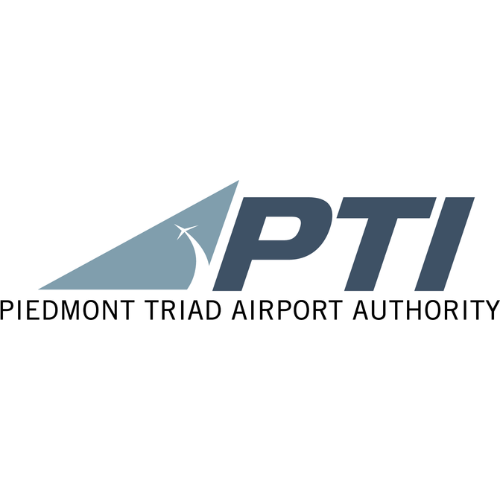As the holiday season approaches, businesses have a prime opportunity to enhance customer engagement and boost brand loyalty. What was once considered a nice touch, seamless and personalised interactions are now the standard customers expect. Adopting an omnichannel approach is key to transforming customer support and marketing campaigns, enabling brands to stand out when customers are eager to spend.
In this article, we’ll explore the benefits of an omnichannel approach to holiday marketing, share industry-leading case studies, and demonstrate how advanced tools like Rezcomm’s CRM – Omnichannel Service Desk can streamline operations, elevate customer experiences, and drive results.
Why omnichannel marketing matters more than ever
Omnichannel marketing ensures customers experience a seamless journey, no matter how or where they interact with your brand. It unites all customer touchpoints, online and offline, into one cohesive system. Whether it’s live chat on a website, emails, social media, or in-person interactions, an omnichannel strategy ensures consistency, personalisation, and efficiency.
This approach doesn’t just enhance convenience; it delivers exceptional customer experiences. Research highlights that 80% of customers prefer omnichannel strategies due to the seamless communication experience and 7 out of 10 retail shoppers use multiple channels to shop.
For businesses such as airports, cruise ports, and beyond, adopting an omnichannel strategy during the holiday season can be transformative. These campaigns not only attract new customers but also reduce operational strain by simplifying enquiries, optimising support, and fostering better alignment within your team.
How a CRM – Omnichannel Service Desk transforms customer engagement
A solution like Rezcomm’s CRM – Omnichannel Service Desk can streamline passenger and customer interactions across channels. This is something that can benefit all transport hubs, particularly during the high-pressure holiday season. Here’s how it works:
Unified omnichannel inbox: Handle all customer enquiries – from social media messages to live chat streams in a single, unified platform, improving response times and consistency.
Smart automations: Reduce manual tasks with automated responses for FAQs, follow-ups, and escalations, freeing up team resources for high-priority cases.
Comprehensive help centre: Offer self-service options via a well-designed FAQ section and agent knowledge base, cutting down repetitive queries.
Detailed customer insights: Understand your customers better with in-depth profiles, private notes, and contact histories at your fingertips.
Secure audit logs: Maintain compliance and ensure transparency with a detailed record of all customer interactions.
These features empower travel hubs to deliver fast, personalised, and efficient support while streamlining backend operations.
Enhancing holiday marketing campaigns with an Omnichannel strategy
An omnichannel strategy paired with tools like Rezcomm’s CRM – Omnichannel Service Desk can take holiday marketing campaigns to the next level. For travel hubs, this means:
Seamless personalisation: Use in-depth customer insights to deliver hyperpersonalised marketing messages across email, social media, and on-site promotions, boosting engagement.
Enhanced customer experience: Offer real-time support during the booking process or while navigating FAQs to guide customers through the booking journey and facilitate conversions.
Higher purchase rates: Research shows that the purchase rate of omnichannel campaigns is 287% higher than single-channel campaigns.
This approach not only strengthens holiday campaigns but also fosters long-term brand loyalty to unlock more revenue.
Inspiring omnichannel holiday marketing case studies
WestJet: Christmas Miracles
In 2013, WestJet’s “Christmas Miracles” campaign captured the world’s attention. Passengers shared their Christmas wishes through a live digital stream with Santa before boarding their flight. Meanwhile, staff at the destination airport purchased and wrapped the gifts, surprising passengers upon arrival.
The campaign went viral, achieving over 47 million YouTube views and impressive social media coverage. It went on to win numerous industry awards, achieved significant growth in brand awareness and remains one of the best examples of an omnichannel holiday campaign to date.
British Airways – A very Kevin Christmas
In 2018, British Airways partnered with agency W to create a nostalgic and heartwarming campaign titled A Very Kevin Christmas. Filmed in New York, the campaign featured four children who had overcome challenging circumstances in inspiring ways, alongside celebrity cameos from Millie Bobby Brown, Pixie Lott, Harry Maguire, and Jodie Whittaker.
To complement the campaign, British Airways offered movie-like experiences for the children and their families during a three-day trip to New York. Highlights included:
- A stay at the iconic Plaza Hotel, including an indulgent ice cream feast in the exclusive Presidential Suite.
- Ice skating in Central Park, capturing the festive spirit of the season.
- A visit to the Rockettes show at the Radio City Music Hall.
- Toy shopping at the newly reopened FAO Schwarz, evoking the wonder of Christmas.
The storytelling seamlessly linked across digital, social media, and in-person experiences, resonating with audiences and developing a deep emotional connection. The campaign’s feel-good factor mirrored the success of WestJet’s Christmas Miracles, capturing the magic and nostalgia of the holiday season.
Building on this goodwill, British Airways extended the campaign into 2019 with its BA Magic 100 initiative, part of its 100th birthday celebrations, solidifying its commitment to creating memorable customer experiences.
Starbucks 2024 Holiday Campaign: Drink In, Breathe Out
This holiday season, Starbucks invites customers to embrace a moment of calm with its Drink In, Breathe Out campaign. Created by TBWA\London, the campaign spans TV, digital, out-of-home (OOH), social media, and experiential activations across EMEA, delivering a cohesive and festive omnichannel experience.
The campaign coincides with the return of Starbucks’ iconic Red Cup and holiday menu, featuring classics like the Toffee Nut Latte and new seasonal treats such as the Gingerbread Cream Iced Chai Latte. A highlight is Red Cup Day (14th November in the US), where customers receive a free reusable coffee cup with their holiday drink purchase. This annual event sparks a social media frenzy as fans share photos of their festive cups, creating user-generated content that Starbucks amplifies for increased reach and engagement.
Starbucks’ omnichannel approach connects with customers wherever they are, blending in-store experiences with digital touchpoints. From emotional TV ads to eye-catching OOH displays, festive pop-ups, and trending social content, the campaign seamlessly integrates channels to nurture loyalty and attract new customers.
5 steps to creating an omnichannel campaign for your travel hub
As the holiday season approaches, it’s crucial to build a seamless omnichannel marketing campaign that resonates with your passengers at every touchpoint. For airports and cruise ports, this is particularly important as customers are often multitasking, whether they’re booking travel, browsing for gifts, or managing their itinerary. Follow these five steps to design an effective omnichannel Christmas campaign that drives engagement and enhances customer experience.
1. Craft high-quality, personalised content
Content is the heart of your omnichannel strategy. During the festive season, your customers are flooded with information and offers, so it’s essential to stand out with content that feels personalised and timely.
Ask yourself: What type of content appeals to your passengers at different stages of their journey? Whether it’s an early-season promotion, exclusive holiday deals, or travel tips, tailor content based on real-time behaviours.
With Rezcomm’s CRM – Omnichannel Service Desk, you can eliminate the guesswork, gathering and leveraging customer data to create personalised content, ensuring your messaging is relevant, timely, and engaging.
2. Understand your customer journey
To truly personalise your campaign, you need to understand your passengers’ needs and preferences at every stage of their journey. Use social listening and feedback forms to gather data and adjust your campaign in real-time. With Rezcomm’s CRM system, you can track passenger interactions across all channels, offering a deeper understanding of their behaviours and preferences. This enables hyper-personalised marketing, offering customised recommendations and incentives based on data insights.
3. Ensure seamless internal communications
Successful omnichannel marketing isn’t just about customer touchpoints. It’s also about the internal collaboration that supports it. Ensure that your teams (marketing, sales, customer service) are aligned and working towards the same goal: delivering a cohesive customer experience. Streamline all customer communications in a single, unified platform. Doing so will reduce friction, enabling teams to respond quickly and maintain consistency across all touchpoints.
4. Utilise integrated industry-specific marketing tools
Leverage tools that are designed specifically for the travel and retail industry to streamline your campaign efforts. Your omnichannel strategy will be more effective when you integrate your customer relationship management tools with your email automation, analytics, and content management systems. Rezcomm Marketplace simplifies this integration, offering industry-leading tools to create dynamic content, track customer interactions, and automate campaigns—all tailored to your business’s needs.
5. Deliver seamless experiences across all devices
To ensure a seamless omnichannel experience, your digital platforms—website, mobile app, and booking systems—must be responsive and user-friendly. Passengers may interact with your brand across multiple devices, so consistency is key, from the first click to the final purchase to keep them engaged.
Go omnichannel for maximum impact
An omnichannel strategy helps your business create meaningful connections and memorable experiences for customers, no matter how they interact with your brand. By delivering personalised messaging, understanding customer journeys, and streamlining internal processes, you can boost engagement, drive sales, and increase brand loyalty. Take your marketing to the next level with Rezcomm’s CRM – Omnichannel Service Desk, offering valuable insights, effortless communication, and seamless operations.
Ready to get started? Download our Customer brochure today and book a meeting to discover how we can enhance your customer experience.



























